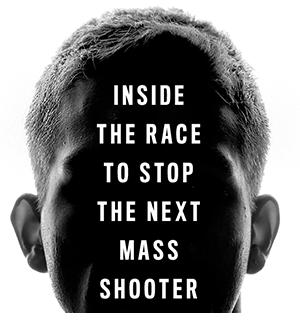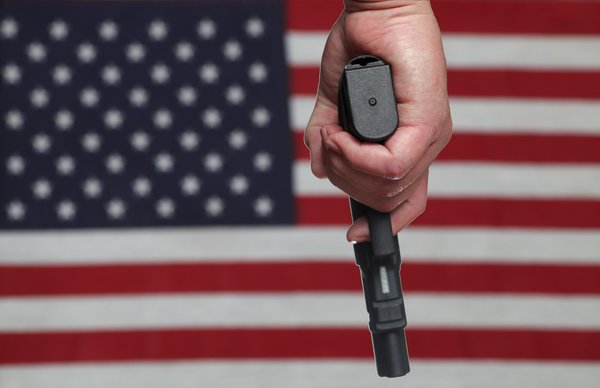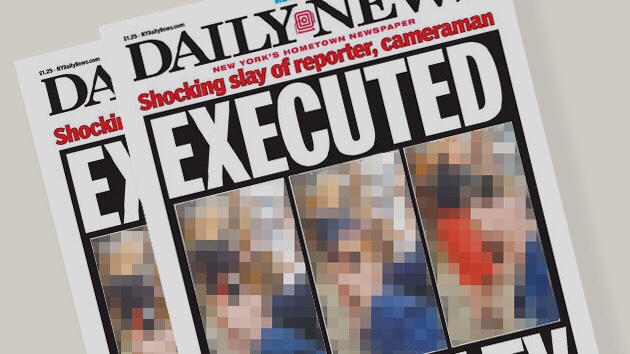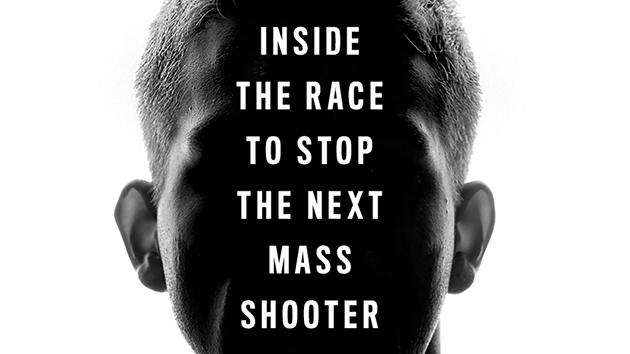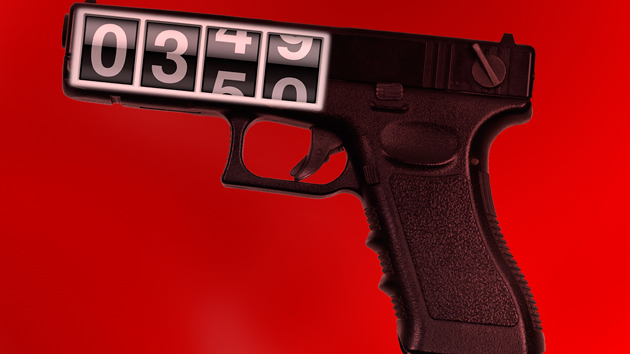
iStock
Take a moment to consider what type of violent event that headline just brought to mind. The places and horrifying attacks you likely recalled surface instantly for most of us when we see or hear the term “mass shooting”—Columbine and Virginia Tech. Aurora and Sandy Hook. Charleston and San Bernardino.
Even as these mass shootings have grown more frequent and loom large in our consciousness, they are a tiny fraction of America’s gun violence and remain relatively rare. Yet many news outlets keep declaring that there have been upwards of “355 mass shootings this year” or “more than one mass shooting per day.” Many gun control advocates say the same.
This wildly inflated statistic isn’t just misleading the public—it’s stirring undue fear and may be encouraging bad policies.
In fact, there have been four mass shootings this year. Or, if you count using the federal government’s current criteria—three or more victims killed in an indiscriminate public rampage—there have been six mass shootings this year.
I recently wrote in the New York Times about the dubious methodology behind the “mass shootings every day” claim—essentially, an anonymous guy on Reddit made it up—and why it makes little sense in the context of Sandy Hook or San Bernardino:
What explains the vastly different count? The answer is that there is no official definition for “mass shooting.” Almost all of the gun crimes behind the much larger statistic are less lethal and bear little relevance to the type of public mass murder we have just witnessed again. Including them in the same breath suggests that a 1 a.m. gang fight in a Sacramento restaurant, in which two were killed and two injured, is the same kind of event as a deranged man walking into a community college classroom and massacring nine and injuring nine others. Or that a late-night shooting on a street in Savannah, Ga., yesterday that injured three and killed one is in the same category as the madness that just played out in Southern California.
While all the victims are important, conflating those many other crimes with indiscriminate slaughter in public venues obscures our understanding of this complicated and growing problem. Everyone is desperate to know why these attacks happen and how we might stop them—and we can’t know, unless we collect and focus on useful data that filter out the noise…
There is value in collecting those stories as a blunt measure of gun violence involving multiple victims. But as those numbers gain traction in the news media, they distort our understanding. According to our research at Mother Jones—subsequently corroborated by the FBI—the more narrowly defined mass shootings have grown more frequent, and overwhelmingly involve legally obtained firearms. Experts in the emerging field of threat assessment believe that this is a unique phenomenon that must be understood on its own.
I think the ongoing debate about how to track and study mass shootings is healthy and valuable. It reflects a greater focus on the problem, beyond the fleeting sensational news cycles. I’d like to expand on why I believe using the term “mass shooting” too broadly is misguided. I’ll also respond to some of the criticisms of Mother Jones‘ approach, and suggest a couple of ideas for further work on this subject.
Context is crucial
Historically the term “mass shooting” has been used loosely. Though it’s challenging to settle on what those words really mean, the semantic debate is less important than putting these events in context. This isn’t just a matter of comparing apples to apples so that we can better understand and mitigate these attacks. It’s also about the public’s sense of security. The probability of an American becoming a victim of a public gun massacre is infinitesimal—and overstating that danger causes undue fear. In the immediate aftermath of San Bernardino, when the 355 shootings claim was all over cable TV news and the internet, a mom in Florida described to a New York Times reporter how worried she was: “When my son gets out of the car in the morning and walks into his high school. When I drop him at his part-time job at a supermarket. When we go to the movies, concerts and festivals. When I walk into my office. It is a constant, grinding anxiety. And it gets louder every single day.”
Other Americans have since expressed that they are afraid to sit in a movie theater. “All I could focus on during the movie was that if someone came into that theater with intent to kill, we were in prime position to be shot,” one woman told the Times. “There would not likely be an escape because of the crowd and our location. It was terrifying.” One-third of people surveyed recently by a consumer group said movie theaters should start requiring patrons to go through metal detectors and bag checks.
A story from St. Louis Public Radio marking the third anniversary of the Sandy Hook massacre this week epitomizes the problem. Its headline read, “In the age of mass shootings like Sandy Hook and San Bernadino, how do local institutions prepare?” The story then began, “In 2015, on average there is more than one mass shooting per day in the United States—and the impact of that is felt across the country.”
The focus of the piece was squarely on how businesses and schools should prepare for an active shooter attack, the likelihood of which is nowhere near daily. (The piece didn’t contain a word about the gang activity or domestic violence that is so much more frequently behind shootings involving multiple victims.)
This distortion feeds a vague but growing sense of dread that could be particularly harmful when it comes to school kids. Nobody would argue against general improvements in security and awareness on K-12 and college campuses, a growing number of which use threat assessment teams to help ensure safety. But as threat assessment expert Dewey Cornell points out, the risk of an active shooter attacking a school, statistically speaking, is beyond remote: “Any given school can expect to experience a student homicide about once every 6,000 years.” Or as another school safety expert explained: Of America’s 55 million school kids, about 20 suffer violent deaths on school grounds each year—a 1 in 2.5 million chance.
It’s far from clear that subjecting students to lockdown drills and simulated shootings, or teaching them to “run, hide, fight” in response, is advisable. Consider this disturbing image of a teenager with fake gunshot wounds, from a video of an active-shooter drill last year at a high school in Troy, Missouri:
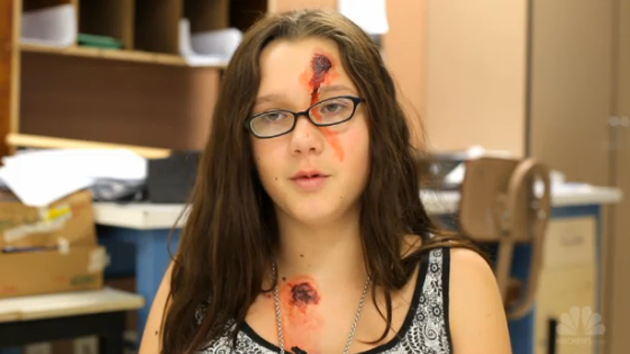
With the rise of these kinds of anxiety-fueled preparations, no shortage of psychologists have noted that many school kids are likely to be in delicate stages of emotional development and could end up traumatized by such activities and training.
What gun control advocates are getting wrong
Some gun control advocates have criticized Mother Jones’ purposefully narrow approach to tallying and studying mass shootings. Here are their most common complaints:
“You’re saying that black lives and other gunshot victims don’t matter.”
As noted above, I wrote in the Times op-ed that tracking other types of multiple-victim gun crimes more broadly has value, and that all victims, whether injured or killed, “are important.”
Gang shootings at nightclubs or house parties are a problem. Ditto abusive men gunning down their families in their own homes—a problem that occurs far more frequently than is generally understood, and one that we have also reported on extensively at Mother Jones. But while also important, these are distinct issues that require different analysis and solutions. (The same goes for the police shootings and other gun crimes we’ve covered.) Their impact on our society doesn’t begin to approach that of an event like the Aurora movie theater massacre, from the psychological to the financial. They aren’t the reason that school security is soon projected to be a $5 billion-a-year industry in the United States—Columbine, Virginia Tech, Sandy Hook, and Umpqua Community College are that reason.
“So then what would you call those other shootings?”
I think a decent alternative could be “multiple-victim shootings.” Or, as space allows, “all shootings in which four or more victims were either injured or killed”—which specifically describes the distinct, much broader criteria that gave rise to the 355 shootings stat.
“Why are you doing this? All you’re doing is helping the gun lobby.”
This line of thinking, to be frank, is baffling. A representative of a well-known gun violence prevention group admonished me in a personal email this week: “Going after gun violence prevention advocates over what constitutes a ‘mass shooting’ seems a curious fight to pick,” this person wrote, “and one that obviously helps only the NRA.”
Plenty of conservatives indeed crowed over my Times op-ed, their partisan motives obvious. The basic gist was, “See, liberals are lying about gun violence, which isn’t actually a big problem!” Of course, data from the Centers for Disease Control and Prevention, on the more than 33,000 deaths and 80,000 hospitalizations per year from gunshots, unequivocally shows otherwise. Not to mention the annual $229 billion hit to our economy from those casualties.
I have no dog in this partisan fight. My charge as an investigative journalist is to go wherever the facts lead me, and that includes gathering and analyzing the most useful data possible. I’ve written before about how damaging I think the hyperbolic partisan shootout over gun policy is, not least in how it distracts from the need for more, and better, research on gun violence.
I’ve also long acknowledged the potential limitations of our approach to tallying mass shootings, which is rooted in long-standing criteria used by the FBI and criminologists. For example: How do we account for the recent movie theater shooting in Lafayette, Louisiana, where “only” two people died and nine were injured? That categorically similar case underscores the difficulty of drawing perfect lines around the study of this problem. There will never be a perfect definition or dataset.
That major media outlets would simply parrot a statistic without scrutinizing its provenance or meaning is hardly surprising. But I find it odd that gun control advocates think it prudent to categorically exaggerate the number of mass shootings. In my view it’s counterproductive both to public understanding and for grappling with potential policy solutions to this very complicated and painfully recurrent problem.
Moreover, there are plenty of Americans who buy the argument that arming more “good guys” is the solution to mass shootings (an argument I’ve been at the forefront of debunking with data-driven reporting.) If anything, overstating how often these terrifying events happen may actually help the NRA and their hard-line supporters argue for more heat-packing vigilantes. Meanwhile, it’s not as if many Americans need convincing that gun massacres are taking place too often.
Where do we go from here?
As I discussed recently with Terry Gross on NPR’s “Fresh Air,” there are still major voids in our understanding of gun violence—from mass shootings and street crimes to accidents and suicides—thanks to an enduring chill on research instigated by the gun lobby two decades ago. So long as significant government resources remain MIA, it’s good news that more journalists and crowd-sourcing efforts are aiming to fill those gaps.
With multiple-victim shootings more broadly, sites like Gun Violence Archive and Mass Shooting Tracker offer aggregation of news reports and data that could potentially be useful for further in-depth analysis. Having studied this subject for more than three years, I think more ground could be broken by focusing on three distinct types of cases: indiscriminate public mass shootings (carried out by what the FBI calls “active shooters”), lethal domestic violence (most of which occurs in private homes), and attacks stemming from conventionally understood crimes such as gang activity and armed robbery.
There is still much to uncover and figure out toward reducing gun violence. As Deborah Azrael, associate director of the Harvard Youth Violence Prevention Center, put it recently in the Christian Science Monitor, “The guy who goes home to his family [and shoots them], that’s a different event than someone who goes out and shoots someone in public. I don’t rank one as being more important than the other. I think they have really different policy implications.”

